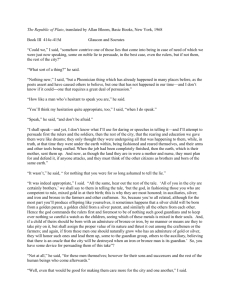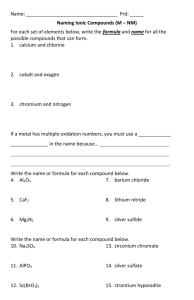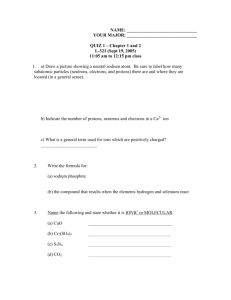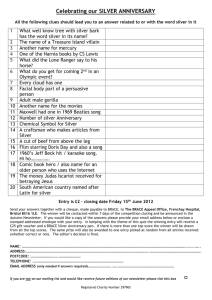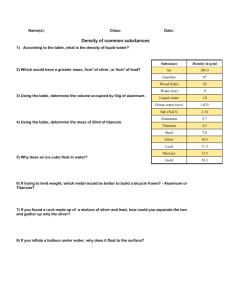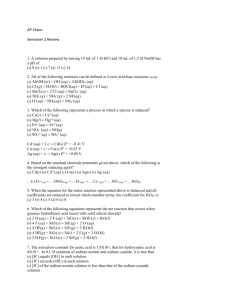Binary Ionic Solids
advertisement
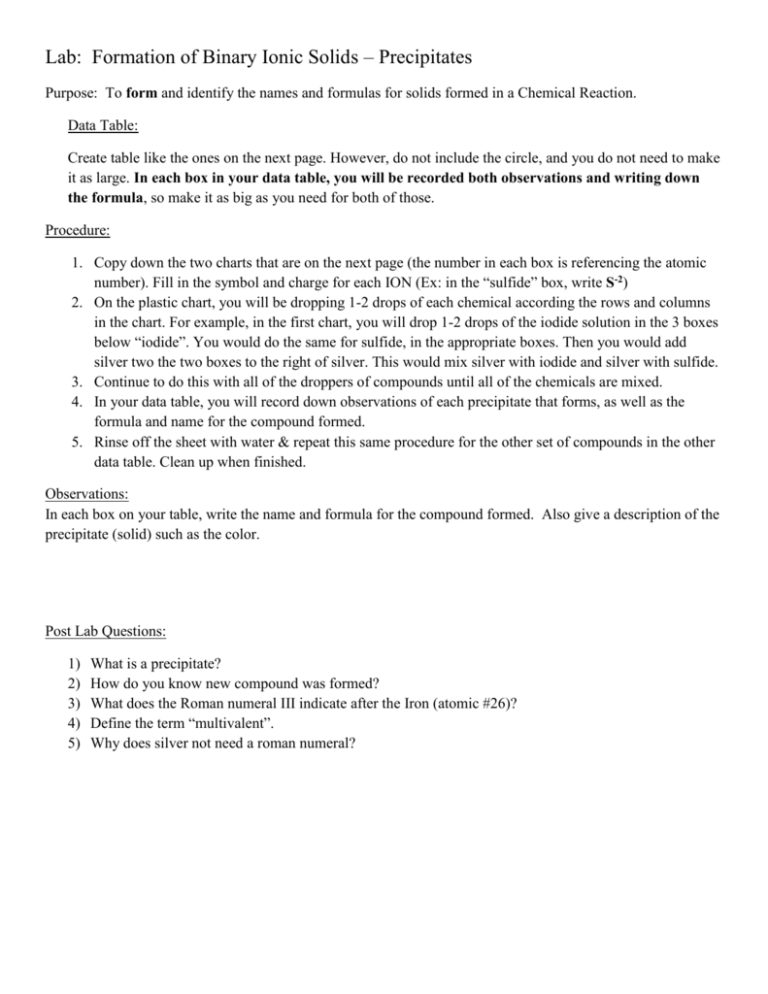
Lab: Formation of Binary Ionic Solids – Precipitates Purpose: To form and identify the names and formulas for solids formed in a Chemical Reaction. Data Table: Create table like the ones on the next page. However, do not include the circle, and you do not need to make it as large. In each box in your data table, you will be recorded both observations and writing down the formula, so make it as big as you need for both of those. Procedure: 1. Copy down the two charts that are on the next page (the number in each box is referencing the atomic number). Fill in the symbol and charge for each ION (Ex: in the “sulfide” box, write S-2) 2. On the plastic chart, you will be dropping 1-2 drops of each chemical according the rows and columns in the chart. For example, in the first chart, you will drop 1-2 drops of the iodide solution in the 3 boxes below “iodide”. You would do the same for sulfide, in the appropriate boxes. Then you would add silver two the two boxes to the right of silver. This would mix silver with iodide and silver with sulfide. 3. Continue to do this with all of the droppers of compounds until all of the chemicals are mixed. 4. In your data table, you will record down observations of each precipitate that forms, as well as the formula and name for the compound formed. 5. Rinse off the sheet with water & repeat this same procedure for the other set of compounds in the other data table. Clean up when finished. Observations: In each box on your table, write the name and formula for the compound formed. Also give a description of the precipitate (solid) such as the color. Post Lab Questions: 1) 2) 3) 4) 5) What is a precipitate? How do you know new compound was formed? What does the Roman numeral III indicate after the Iron (atomic #26)? Define the term “multivalent”. Why does silver not need a roman numeral? # 53 Iodide # 16 Sulfide # 47 Silver # 26 Iron (III) # 82 Lead (II) Chromate # 47 Silver # 26 Iron (III) # 82 Lead (II) Carbonate
